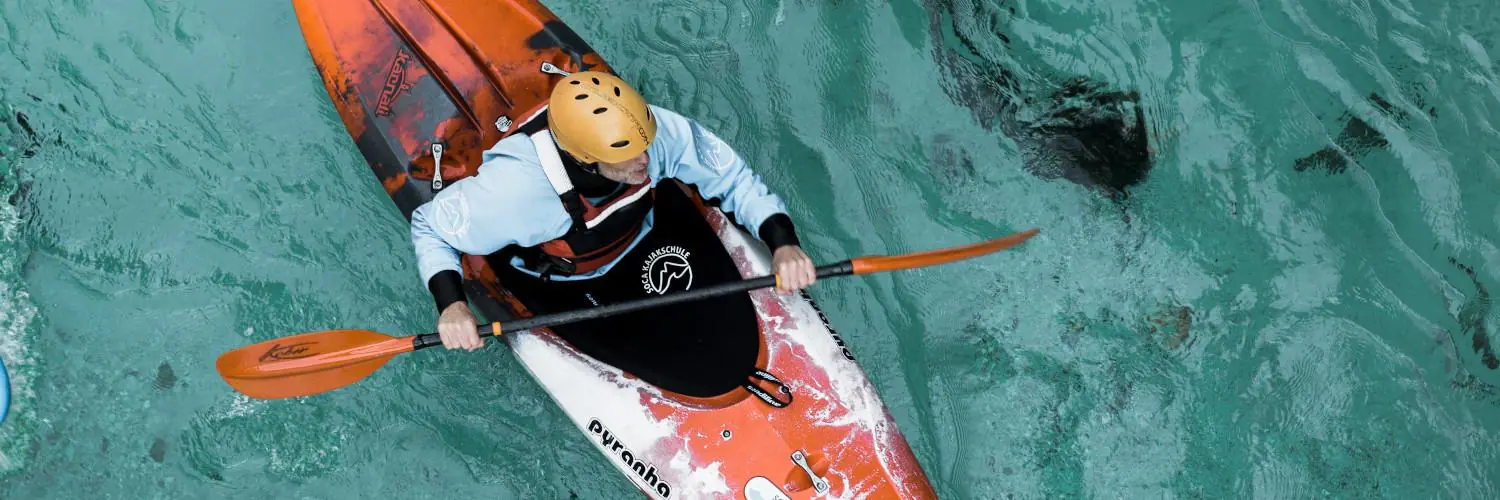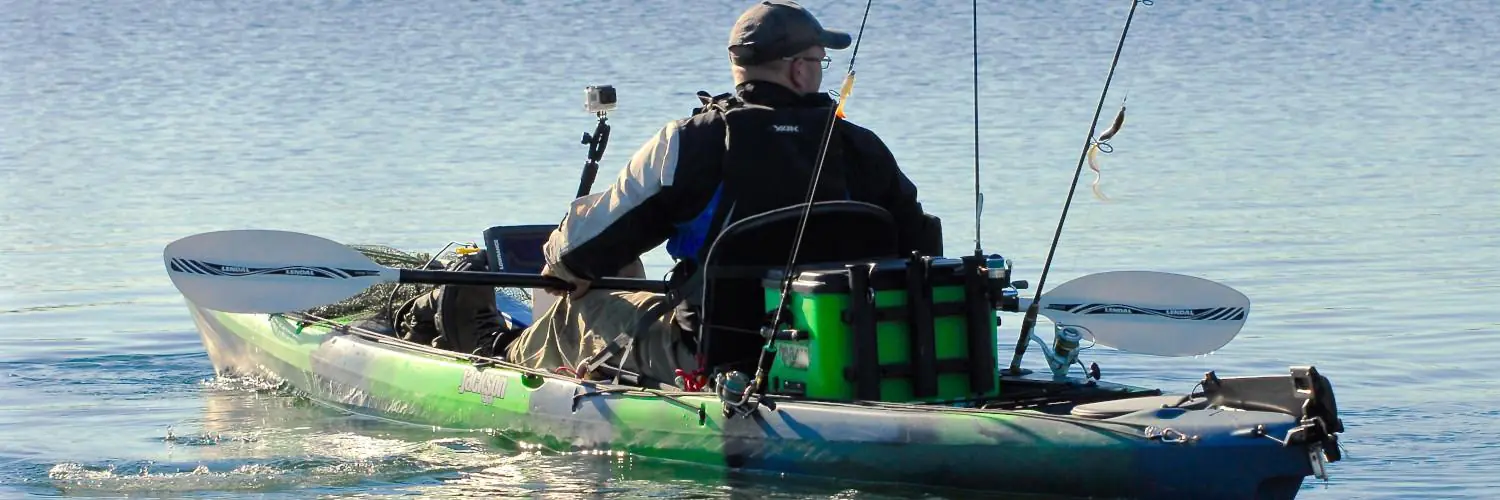Kayaking is a popular water sport that offers adventure and relaxation. Getting your kayak from dry land into the water can seem tricky at first. But with a few simple steps, anyone can launch a kayak safely and easily from shore.
The key to a smooth kayak launch is choosing the right spot. Look for a gently sloping beach or bank with calm water. Avoid areas with strong currents or big waves. Sandy beaches work well, but rocky shores can also be fine if you’re careful.
Once you’ve picked your launch site, place your kayak at the water’s edge. Make sure it’s parallel to the shore. You can either sit in the kayak and push off with your hands, or straddle it and slide in as you push off. Keep your paddle close by so you can start paddling right away. With practice, launching your kayak will become second nature.
Table of Contents
Preparing for Kayak Launch
Getting ready for a kayak launch takes some planning. A few key steps will set you up for a safe and fun time on the water.
Choosing the Right Kayak
Pick a kayak that fits your skill level and the type of water you’ll be on. Sit-on-top kayaks are good for beginners and calm waters. Sit-in kayaks offer more control in rough conditions. Make sure the kayak is the right size for your body. You should be able to comfortably reach the foot pegs and paddle.
Check that the kayak is in good shape. Look for cracks or damage. Test that all hatches close properly. If using a sit-in kayak, make sure the spray skirt fits snugly around the cockpit.
Safety Gear and Essentials
A life jacket or PFD is a must-have for every kayaker. Pick one that fits well and is made for paddling. Bright colors are best for visibility. Other key safety items include:
- Whistle for signaling
- Flashlight or headlamp
- First aid kit
- Spare paddle
- Dry bag for electronics and extra clothes
Dress for the water temperature, not the air temperature. Bring sun protection like a hat, sunglasses, and sunscreen.
Pre-Launch Checklist
Do a final check before getting in the water:
- Adjust foot pegs and seat for comfort
- Secure all hatches and compartments
- Attach safety leash if using one
- Put on and fasten life jacket
- Place paddle within easy reach
Check the weather forecast and water conditions. Let someone know your planned route and return time. Bring plenty of water and snacks.
Practice getting in and out of your kayak on land first. This will make the actual launch smoother and safer.
Understanding Weather and Water Conditions
Checking the weather and water conditions is crucial before launching a kayak from shore. This helps ensure a safe and enjoyable kayaking experience. Knowing what to look for can make a big difference in your paddling adventure.
Assessing Weather Patterns
Wind speed is a key factor to consider when kayaking. Strong winds can make paddling harder and tire you out faster. Check the forecast for wind direction and speed before heading out. Calm days are best for beginners. More experienced kayakers can handle moderate winds.
Look at the sky for signs of changing weather. Dark clouds may mean rain is coming. Sudden changes in temperature or air pressure can signal storms. Always check for severe weather warnings in your area.
Temperature matters too. Hot days require extra water and sun protection. Cold days need proper clothing to avoid hypothermia. Pack the right gear based on the weather forecast.
Analyzing Water Conditions
Water conditions affect how easy or hard it is to launch and paddle your kayak. Calm water is ideal for launching, especially for new kayakers. Look for areas with little to no waves near the shore.
Tides play a big role in coastal kayaking. Check tide charts to know when high and low tides occur. This helps you plan your launch time and avoid getting stuck in shallow areas.
Be careful of the surf zone when launching. Watch for approaching waves and time your entry between sets. Small waves are easier to handle than large ones.
Current strength is important too. Strong currents can push you off course. Look for signs of water movement like floating objects or ripples on the surface. Avoid areas with fast-moving water unless you’re very skilled.
Techniques for Shoreline Launches
Shoreline launches require specific methods to safely get your kayak in the water. The key is to carefully navigate shallow areas and handle waves near the beach.
Launching from the Beach
Find a spot with gentle slopes and minimal rocks. Place your kayak parallel to the shoreline in ankle-deep water. Stand on the side facing open water. Grip the cockpit rim with both hands. Lift one leg over the kayak and sit down quickly.
Use your hands to push off the sand. Slide your legs into the cockpit. Grab your paddle and start moving away from shore. In calm conditions, you can wade out deeper before getting in.
For sit-on-top kayaks, you can straddle the kayak and slide on from the back. This works well in very shallow water.
Navigating the Surf Zone
Time your launch between wave sets. Ask a friend to help steady your kayak. Paddle hard through breaking waves. Keep your kayak perpendicular to the waves.
Lean into oncoming waves to avoid flipping. Use a low brace if needed. Once past the breakers, turn parallel to the shore.
If a large wave approaches, paddle towards it and go over the top. For bigger surf, try a “seal launch” by sliding into deeper water on your belly.
Practice in small waves first. Always wear a life jacket and use a spray skirt in rougher conditions.
Dock Launching Strategies
Launching a kayak from a dock requires specific techniques to enter the water safely. Proper positioning and careful movements are key to a successful dock launch.
Dock Launch Basics
Place the kayak in the water parallel to the dock. Set your paddle within reach on the dock. Sit on the edge of the dock with your legs dangling over the side. Lower one leg into the kayak’s cockpit to hold it steady.
Grab the cockpit’s far edge with your outer hand. Keep your weight on the dock while pulling the kayak close. Slowly lower yourself into the seat. Once seated, adjust your foot pegs and position.
To push off, use your hands on the dock to gently slide the kayak away. Pick up your paddle and start paddling.
Exiting from a Dock Safely
Returning to a dock needs care to avoid tipping. Paddle slowly toward the dock at a slight angle. As you get close, turn the kayak parallel to the dock.
Reach out and grab the dock with your hand closest to it. Hold on firmly to keep the kayak steady. Place your paddle on the dock within easy reach.
Put both hands on the dock. Push down to lift yourself out of the kayak. Swing your legs onto the dock one at a time. Stand up slowly, making sure you have good balance.
Help someone on the dock pull your kayak out of the water if needed. Always be mindful of slippery surfaces when getting out.
Getting into and out of Your Kayak
Launching and exiting a kayak from shore requires proper technique to stay safe and dry. A few key steps can help you master this important skill.
Stabilizing Your Kayak
Place your kayak parallel to the shoreline in shallow water. Use your paddle as a stabilizer by placing one end on the shore and the other across the kayak’s cockpit. This creates a tripod effect, keeping the boat steady.
For extra stability, ask a friend to hold the kayak in place while you enter. If alone, anchor the kayak by pushing it slightly into soft sand or mud at the water’s edge.
Always check that your kayak is floating freely before fully entering. This prevents damage to the hull and makes it easier to paddle away once seated.
Entering Your Kayak from the Shore
Stand next to your kayak with the cockpit at hip level. Place your paddle across the back of the cockpit for support. Grip the sides of the cockpit with both hands.
Lower yourself to sit on the edge of the cockpit. Swing your legs into the kayak one at a time. Keep your weight low and centered to maintain balance.
Slide your bottom into the seat, adjusting your position as needed. Place your feet on the foot pegs and secure your spray skirt if using one.
Grab your paddle and push off from shore with your hands or paddle. Take care not to scrape the bottom of your kayak on rocks or sand.
Proper Exit Techniques
Paddle to a spot where the water is knee-deep or less. Position your kayak parallel to the shore, just like when entering.
Remove your spray skirt if wearing one. Place your paddle across the back of the cockpit for support.
Grip the sides of the cockpit and swing your legs out of the kayak one at a time. Keep your weight centered to avoid tipping.
Once your legs are out, stand up slowly while holding onto the kayak for balance. Step away from the boat carefully, watching for slippery rocks or uneven ground.
Pull your kayak fully onto shore if ending your trip, or stabilize it for re-entry if taking a break.








